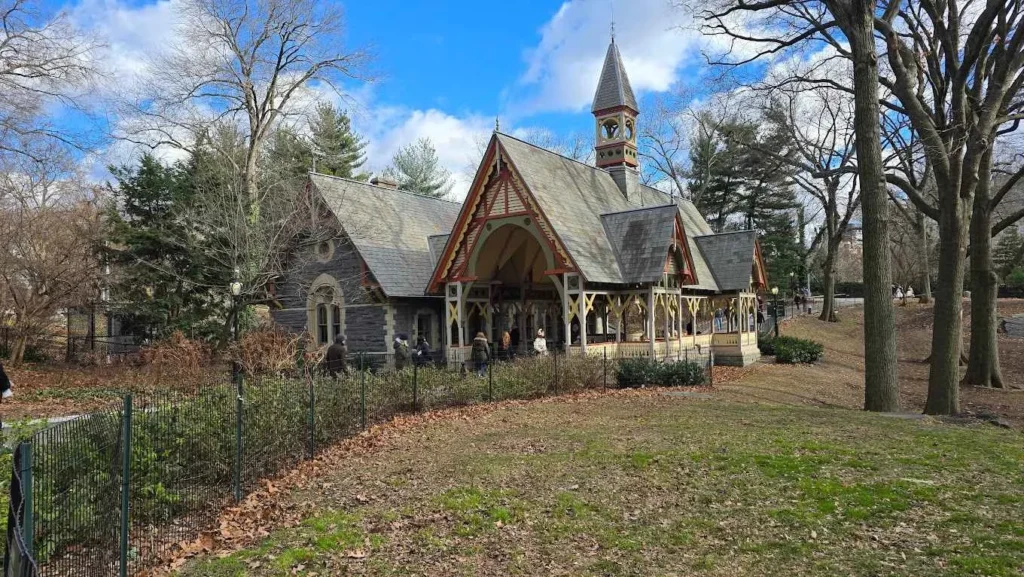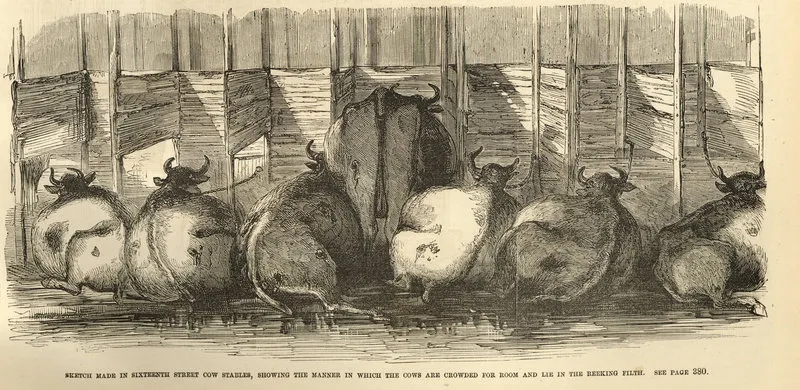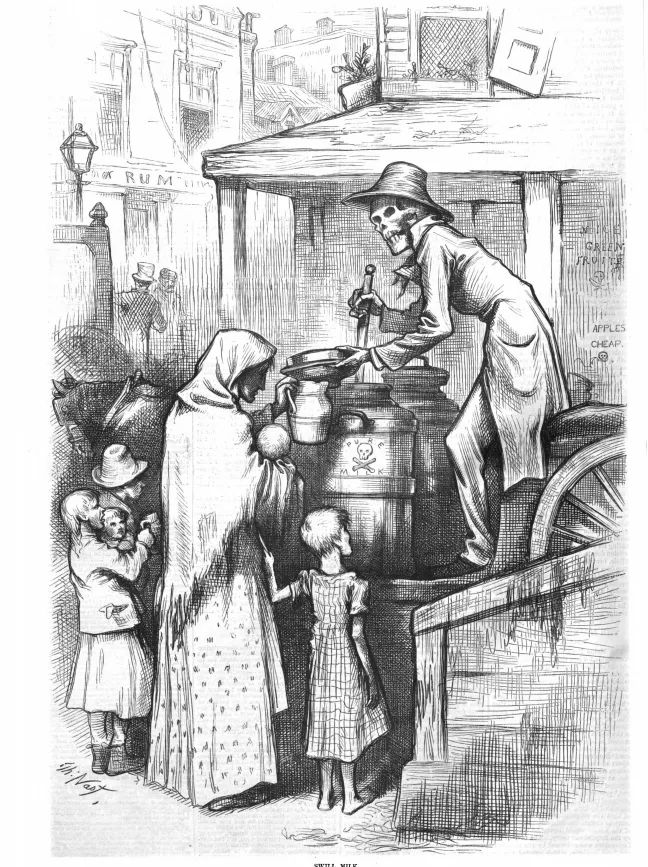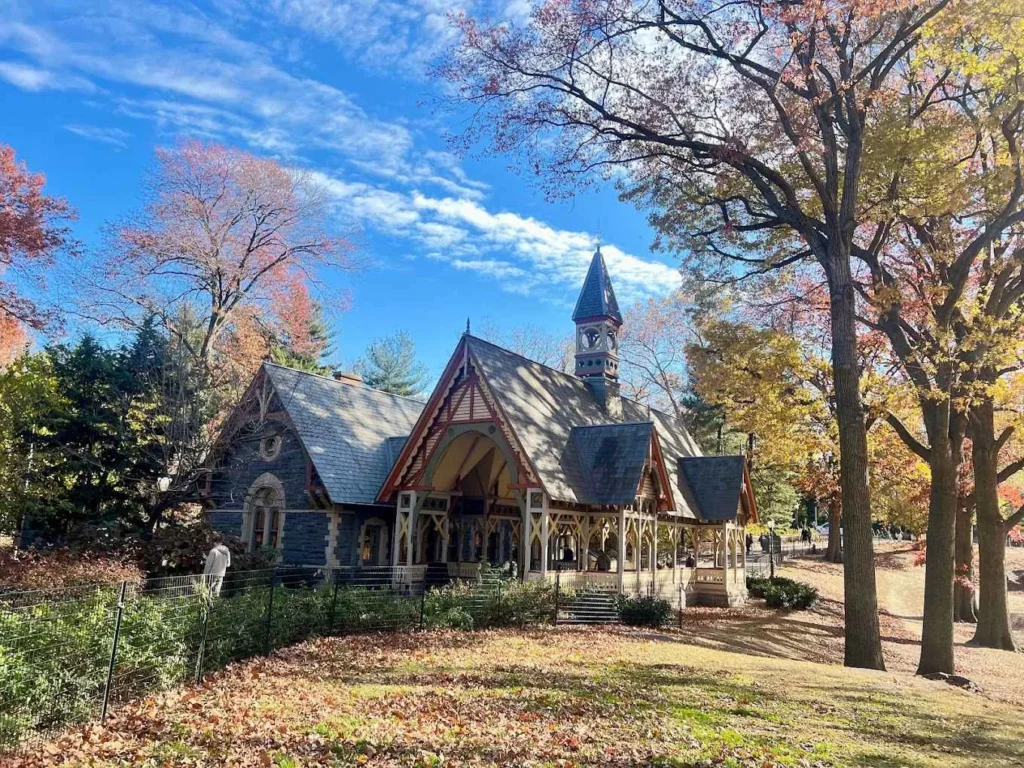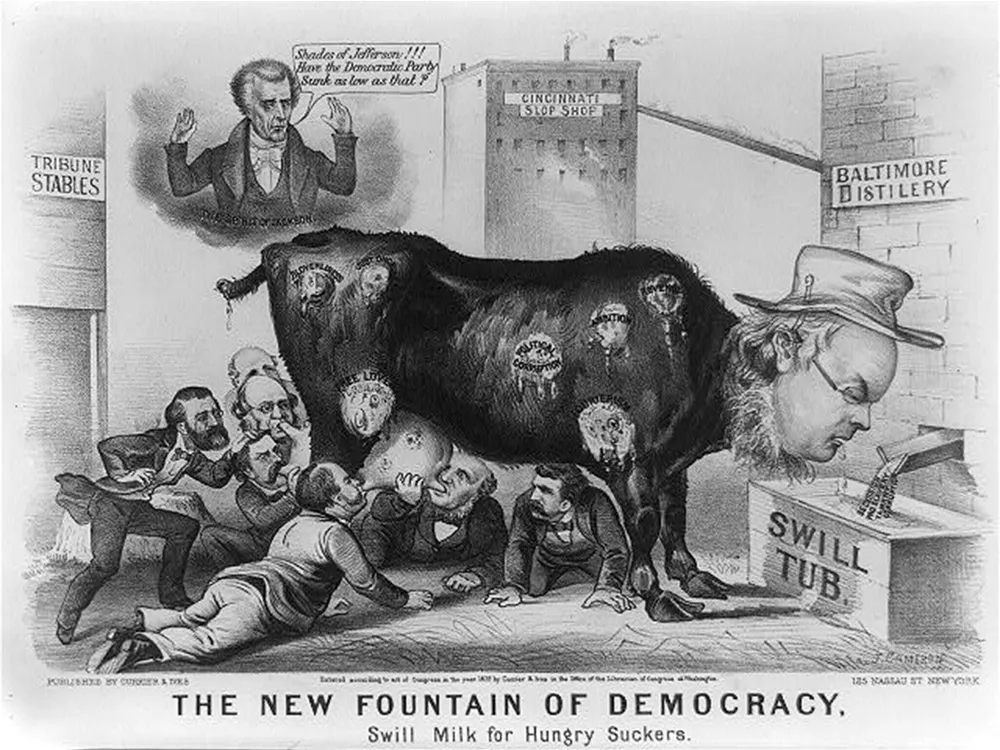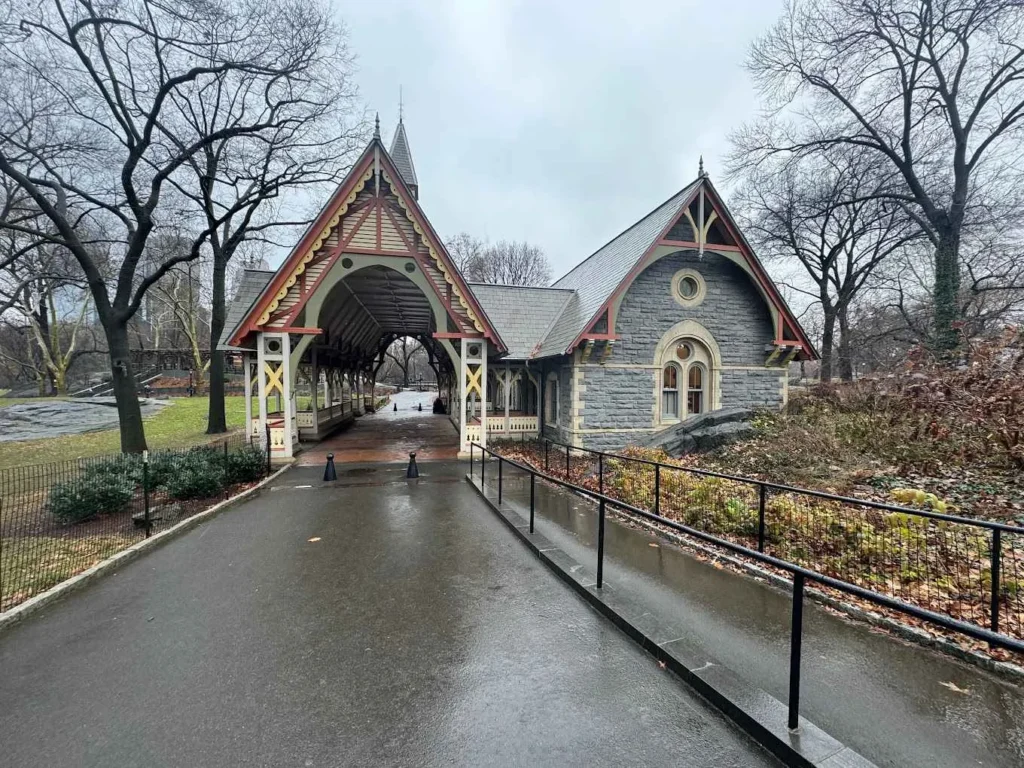Nestled within Central Park lies a charming Victorian Gothic building known as The Dairy. Originally constructed to supply fresh and affordable milk to children, its creation stemmed from a dire health crisis that gripped New York City in the mid-19th century. This crisis became infamously known as “The Swill-Milk Scandal.”
The Origins of a Crisis
In the early 1800s, fresh milk came from farms upstate, but its cost made it a luxury for many families in Manhattan. To fill the demand, city dwellers turned to cheaper alternatives from distillery-dairies located in Manhattan and Brooklyn. However, these dairies produced milk under dangerously unsanitary conditions.
After distilleries processed grain for alcohol, they were left with a steaming mash called swill. Instead of discarding it, distilleries fed the swill to dairy cows housed nearby. The cows, malnourished and sickly from their poor diet, produced milk that was unnaturally thin and bluish.
A Deadly Deception
To make this unappealing milk marketable, vendors added substances like starch, plaster, and even white paint. They falsely marketed the resulting product as “pure country milk.” Tragically, this tainted milk caused severe illness among children.
In 1857 alone, nearly 8,000 infants died mysteriously. It wasn’t until 1858 that journalist Frank Leslie published a shocking exposé detailing the horrific conditions of swill-milk production. He denounced the distillery owners as “milk murderers” responsible for spreading “liquid poison” to unsuspecting families.
Reform and a New Vision
Years of public outcry eventually led to the passage of New York State’s first milk regulations in 1862. Inspired by these events, Central Park’s designers Calvert Vaux and Frederick Law Olmsted likely considered the milk safety scares when drafting plans for The Dairy, which opened in 1871.
Today, The Dairy no longer supplies milk but serves as a visitor center and gift shop. It stands as a reminder of a dark chapter in public health history.
